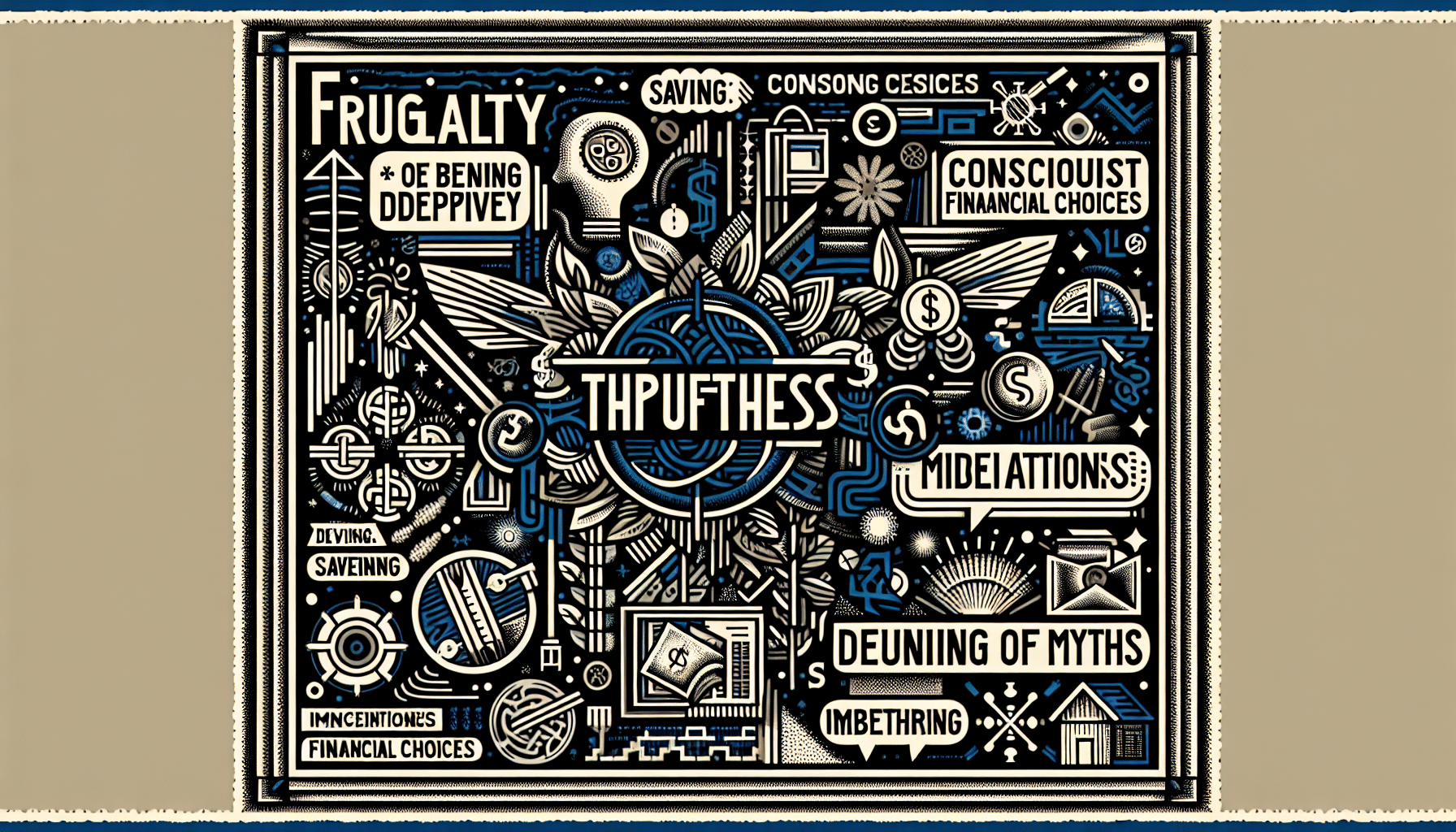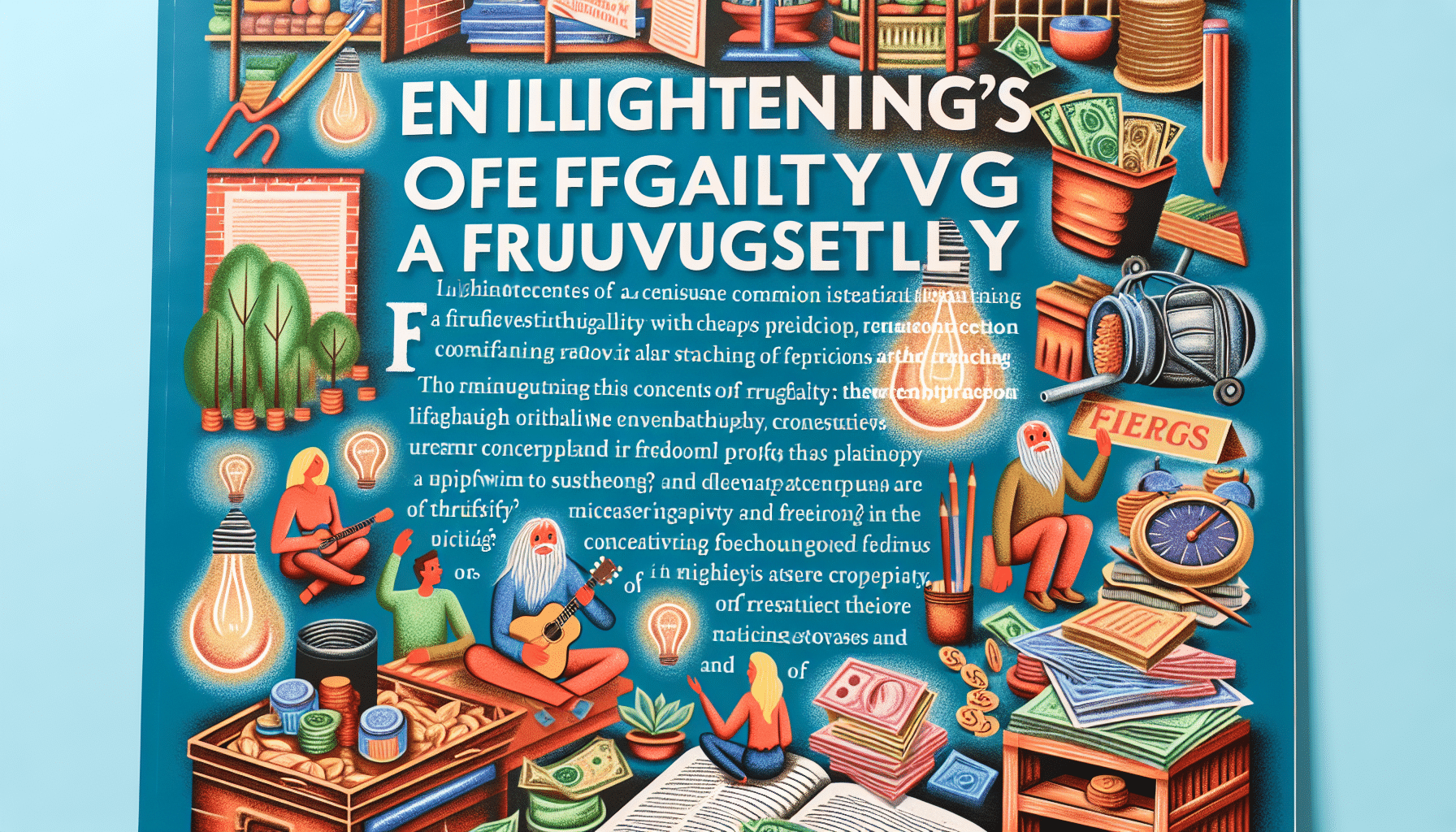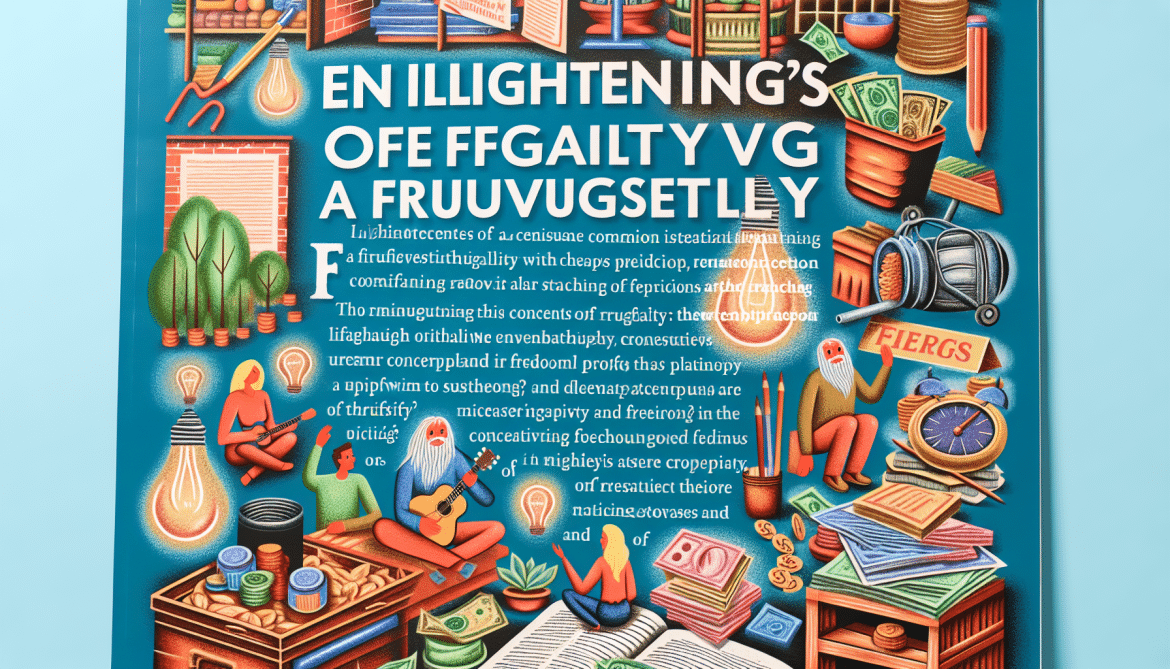When it comes to being frugal and thrifty, it's important to separate fact from fiction. These terms often get a bad reputation, but the truth is, frugality and thriftiness can be incredibly beneficial for your wallet and overall financial well-being. Being frugal means prioritizing your spending and making thoughtful choices to get the best value for your money. On the other hand, being thrifty means maximizing the use of what you already have. By creating a budget, doing research before making purchases, and considering long-term consequences, you can be frugal. And by reusing items, repurposing what you own, and shopping secondhand, you can be thrifty. So, let's debunk the misconceptions and embrace the advantages of frugality and thriftiness.

This image is property of images.pexels.com.
Misconception 1: Frugality and Thriftiness are the Same
Frugal and thrifty are terms that are often misunderstood and associated with negative connotations. However, it's important to understand that there is a distinction between the two. Being frugal means prioritizing spending and finding the best value for your money, while being thrifty means making the most of what you already own.
Explaining the Difference
When you are frugal, you are mindful of your expenses and make deliberate choices to spend your money wisely. This means creating a budget, doing thorough research before making purchases, and knowing your priorities. Being frugal also involves valuing your time and considering the long-term consequences of your financial decisions.
On the other hand, being thrifty involves finding ways to make the most of what you already have. This can include reusing items, repurposing things you already own, and being resourceful in every aspect of your life. Thrifty individuals are often adept at finding bargains and shopping secondhand to save money.
Misconception 2: Frugality Means Being Cheap
Another common misconception is that being frugal means being cheap. While both concepts involve saving money, being cheap implies a refusal to spend money altogether, often at the expense of quality or comfort. Being frugal, however, is about finding value and getting the most out of your purchases without sacrificing quality or satisfaction.
The Balancing Act
Being frugal doesn't mean you can't enjoy the finer things in life. It's all about finding a balance between your financial goals and your desires. For example, you might choose to splurge on experiences that bring you joy while being more frugal when it comes to material possessions. It's about prioritizing what truly matters to you and making conscious choices accordingly.
Misconception 3: Frugality and Thriftiness are Only for Those on a Tight Budget
Many people believe that frugality and thriftiness are only necessary for those on a tight budget. However, these principles can benefit individuals from all income levels. Even if you have a substantial income, being frugal and thrifty can help you allocate your money toward long-term goals such as saving for retirement, investing, or building an emergency fund.
The Power of Financial Awareness
Whether you're on a tight budget or have extra income to spare, being frugal and thrifty can help you develop a mindset of financial awareness. By understanding the value of your money and prioritizing your expenses, you can build a solid financial foundation and make smarter choices with your finances.
Misconception 4: Frugality and Thriftiness Limit Your Lifestyle
Some individuals believe that embracing frugality and thriftiness means living a restricted or deprived lifestyle. However, this couldn't be further from the truth. In fact, being frugal and thrifty can enhance your life and open up opportunities that you might not have considered before.
Embracing a Simpler Life
Living a frugal lifestyle encourages you to focus on what truly brings you joy and fulfillment. It allows you to prioritize experiences and relationships over material possessions. By making intentional choices with your money, you can create a life that is aligned with your values and live more authentically.

This image is property of images.pexels.com.
Misconception 5: Frugality and Thriftiness Require Sacrificing Happiness
One misconception that often arises is that being frugal and thrifty means sacrificing happiness. Many assume that cutting back on expenses and being mindful of your spending would result in a less enjoyable life. However, frugality and thriftiness can actually enhance your overall well-being and provide a sense of financial security.
Financial Freedom and Peace of Mind
By adopting a frugal lifestyle and being thrifty, you can reduce financial stress and gain control over your money. Rather than constantly worrying about debt or living paycheck to paycheck, you can build an emergency fund, pay off debts, and save for the future. This sense of financial security can greatly contribute to your overall happiness and peace of mind.
Misconception 6: Frugal and Thrifty People are Stuck in the Past
There is a misconception that frugal and thrifty individuals are stuck in outdated ways of living. However, this couldn't be further from the truth. In today's world, there are numerous opportunities to apply frugality and thriftiness while taking advantage of modern advancements.
Embracing New Ways of Saving
Frugal and thrifty individuals are often quick to adopt new technologies and strategies that can help them save money. From using cashback apps and couponing websites to finding deals online, they are always on the lookout for innovative ways to stretch their dollars. Being frugal and thrifty doesn't mean rejecting progress; it means finding ways to maximize the advantages of modern living while still being financially responsible.

This image is property of images.pexels.com.
Misconception 7: Frugality and Thriftiness are Time-consuming
Many people assume that being frugal and thrifty requires a significant amount of time and effort. However, this is not necessarily the case. While it's true that adopting these principles may initially require some adjustment, they can eventually become second nature and integrate seamlessly into your daily life.
Efficiency and Organization
Being frugal and thrifty encourages you to be more organized and deliberate with your time and resources. By planning ahead, creating routines, and being mindful of your choices, you can actually save time and reduce unnecessary stress. Additionally, investing time in learning money-saving strategies and developing efficient habits can yield long-term benefits and free up time for activities that truly matter to you.
Misconception 8: Frugality and Thriftiness Mean Hoarding
Some individuals associate frugality and thriftiness with hoarding or an excessive attachment to material possessions. However, being frugal and thrifty doesn't mean holding on to unnecessary items or accumulating clutter. On the contrary, it involves being intentional with your belongings and only keeping things that serve a purpose or bring you joy.
Minimalism and Mindful Consumption
Frugal and thrifty individuals often embrace the principles of minimalism and mindful consumption. They understand the value of living with less and focus on having quality over quantity. By decluttering and letting go of items that no longer serve a purpose, they create space for the things that truly matter in their lives.

Misconception 9: Frugality and Thriftiness are Uncool
Some individuals perceive frugality and thriftiness as old-fashioned or uncool. However, with the increased focus on sustainability, many people are now recognizing the benefits of adopting a frugal and thrifty lifestyle.
A Shift in Perspective
Choosing to live frugally and thriftily is no longer seen as a limitation, but rather as a conscious choice to reduce waste and make more sustainable decisions. It's becoming increasingly trendy to repurpose items, shop secondhand, and prioritize experiences over material possessions. Being frugal and thrifty can actually be seen as a way to express your individuality and contribute to a more environmentally friendly world.
Misconception 10: Frugality and Thriftiness are Only About Material Possessions
Finally, a common misconception is that being frugal and thrifty solely revolves around material possessions. While being resourceful with your money is an important aspect, frugality and thriftiness can extend beyond just material items.
Applying the Principles
Being frugal and thrifty can also involve managing your time efficiently, prioritizing self-care, and making mindful decisions in various areas of your life. For example, you can save money by cooking at home instead of eating out, or by finding free or low-cost entertainment options. These principles can be applied to all aspects of your life, allowing you to optimize your resources and live a more fulfilling and meaningful life.
In conclusion, frugality and thriftiness should not be misunderstood or associated with negative connotations. They are principles that can benefit individuals from all income levels and enhance their overall well-being. By prioritizing spending, making the most of what you already have, and adopting a mindful and intentional approach to your finances and resources, you can achieve financial security, reduce stress, and live a more authentic and fulfilling life.


